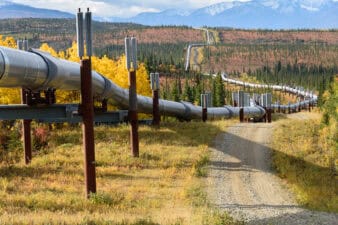Intermediate oil sands producer MEG Energy (TSX:MEG) has seen its stock plunge 33% since the start of this year, despite the North American benchmark West Texas Intermediate (WTI) gaining 23%. Even sharply higher Canadian heavy oil prices (the Western Canadian Select (WCS) benchmark is up by more than 53%) has failed to buoy MEG’s market value. A key reason for the sharp collapse in the oil sands operator’s value was the expiry of Husky Energy’s unsolicited offer to acquire the company.
Significant oil reserves
There are growing fears that the oil sands operator will be unable to unlock the considerable value held by its vast oil reserves and deliver for investors. MEG’s flagship asset is its wholly owned Christina Lake steam-assisted gravity drainage (SAGD) operation in northeastern Alberta. That asset — along with its Surmont property — gives it net petroleum reserves of 2.2 billion barrels of bitumen, which have been assessed to have a net present value of $14.7 billion.
After deducting total debt of around $3.7 billion, this gives MEG a net asset value of around $37 per share, which is more than seven times greater than its current market value. On initial appearances, that makes MEG an extremely attractively valued play on higher oil, but there are some significant reasons for that discount. Key among them is that only 204 million net barrels are classified as proved developed and producing. Those oil reserves only have an after-tax value of $4.1 billion, which, after deducting total debt, are worth a mere $1.35 per share, or less than a third of MEG’s current stock price.
When it is considered that it will take a substantial amount of capital to develop MEG’s copious undeveloped reserves of just over one billion barrels to the point where they will start producing bitumen and hence cash flow, this is perhaps a better measure of the company’s worth. It also reflects the considerable risks associated with MEG’s operations, because there is no guarantee that it can obtain the required funds to economically develop those reserves.
MEG has a 2019 capital budget of $200 million and flagged that a further $75 million is available on a discretionary basis, depending on oil prices. That spending allows it to sustain production at 100,000 barrels daily, but it has reduced its 2019 guidance to somewhere between 90,000 and 92,000 barrels in response to the government of Alberta’s mandatory production cuts. While MEG has a clearly delineated path to build its operations so that production reaches 210,000 barrels daily, that will be a costly exercise to undertake; it is dependent on market conditions, namely the price of crude.
This is a significant risk for MEG. Not only is it dependent on the price of the North American benchmark WTI, but it is exposed to the tremendous volatility associated with WCS.
A lack of pipeline exit capacity and growing oil sands production caused a considerable oil glut to emerge in Western Canada toward the end of 2018. This saw the discount applied to WCS rise to record levels, causing it to trade at less than US$13 per barrel, even when WTI was selling for over US$55 a barrel. Despite record crude-by-rail shipments, the supply glut kept expanding triggering fears that bitumen production in the oil sands was fast becoming unprofitable.
While Edmonton’s introduction of mandatory production cuts may have caused WCS prices to soar, they haven’t resolved the underlying cause, which is a distinct lack of pipeline capacity. They have also made it less economic to ship bitumen by rail, which has led to some oil sands operators, including Imperial Oil, to substantially reduce the volume of oil they ship. That alone could cause another glut to emerge.
The difficulties associated with expanding pipeline capacity become clear when considering the latest issues surrounding Enbridge’s Line 3 Replacement Project. This development is crucial to alleviating transportation bottlenecks in Western Canada and thereby supporting higher prices for domestic crude. The energy infrastructure giant has been forced to revise the date for it to enter service from the second half of 2019 to sometime before the end of 2020. That will weigh on the price of bitumen and potentially force Alberta to extend its unpopular production cuts.
Is it time to buy MEG?
While the short-term outlook for MEG has improved, there are still considerable fears that the wide price differential between WCS and WTI will return, impacting its ability to fund the development of its bitumen reserves. The issues surrounding the Line 3 Replacement only serve to underscore the hazards faced by MEG. Without the backing of a cashed-up energy major like Husky, there is every likelihood that a large portion of MEG’s copious bitumen reserves will remain untapped.






